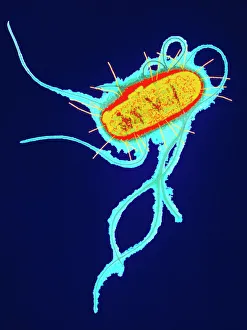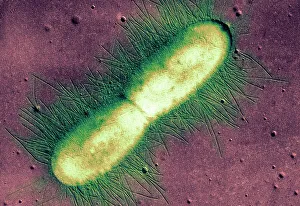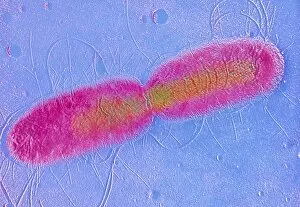Pilus Collection
"Pilus: Unveiling the Intricate World of Bacterial Connections and Mobility" Delving into the microscopic realm, we encounter the fascinating pilus
All Professionally Made to Order for Quick Shipping
"Pilus: Unveiling the Intricate World of Bacterial Connections and Mobility" Delving into the microscopic realm, we encounter the fascinating pilus, a slender appendage that plays a crucial role in bacterial communication and movement. In particular, it is prominently found in the E. Coli bacterium, serving as a vital tool for various processes. Underneath an electron microscope's watchful eye (TEM), we witness this remarkable structure extending from the surface of E. Coli cells with its hair-like appearance. Known as a bacterial twitching motility protein, pilus enables these microorganisms to engage in intricate movements across surfaces by retracting and pulling themselves forward. Beyond mere locomotion, scientists have also explored groundbreaking concepts like bacterial computing through captivating conceptual artwork. Visualizing how bacteria could potentially process information collectively using their pili as interconnected wires sparks curiosity about their computational abilities. In awe-inspiring artworks depicting gram-negative bacteria, we are reminded of pilus' significance in facilitating interactions between different microbial species through a process called bacterial conjugation. This mechanism allows genetic material exchange among bacteria—an essential factor contributing to their adaptability and evolution. As our understanding deepens regarding these minuscule structures' multifaceted functions, artists continue to capture their essence through imaginative conceptual artwork portraying futuristic scenarios where bacteria become part of complex computing systems or act as conduits for genetic diversity transfer. The world unravels before us—a testament to nature's ingenuity at both microscopic and macroscopic scales—showcasing how even seemingly insignificant components can hold immense importance within the intricate web of life's connections.










